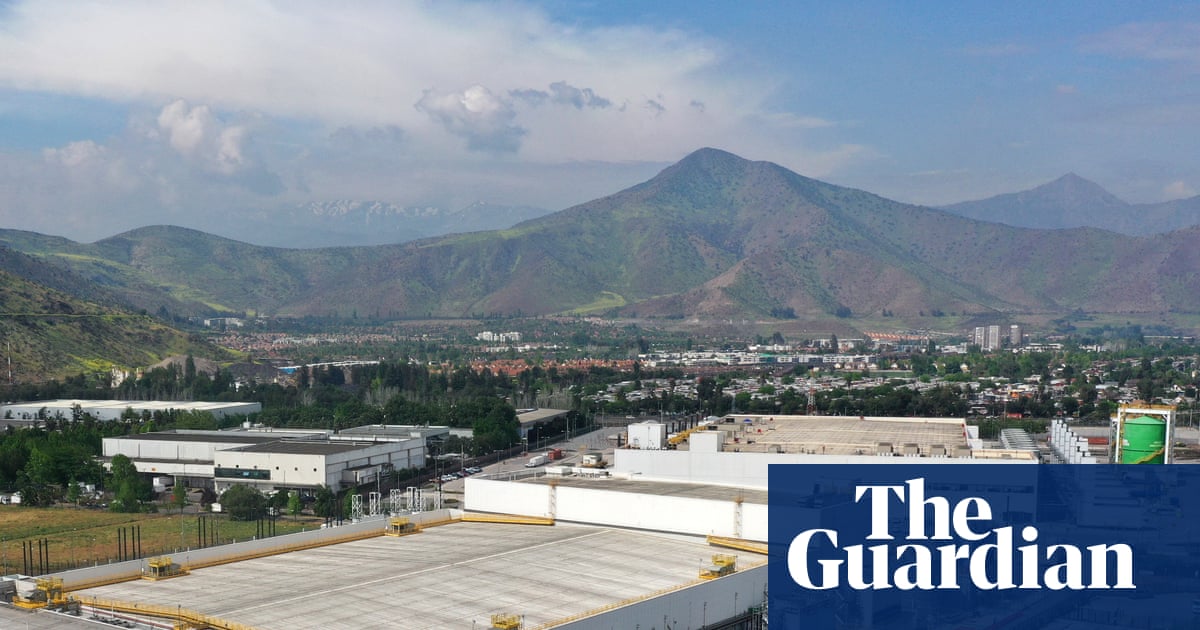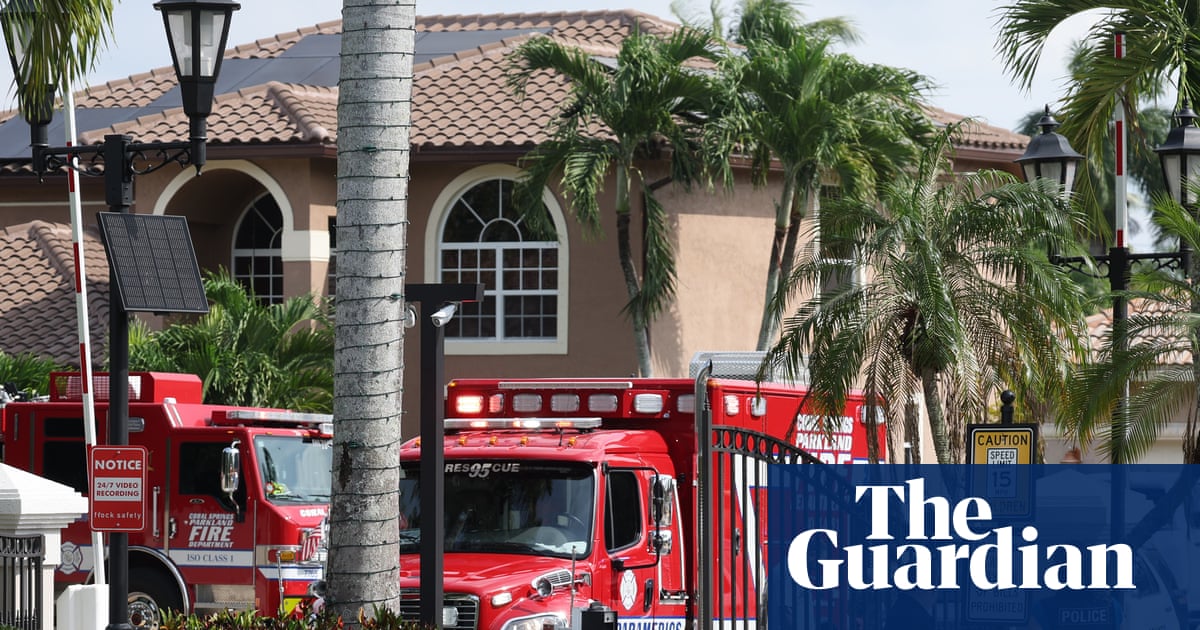Three years after starting work as an electrician at the Portsmouth Gaseous Diffusion Plant, Vina Colley started getting sick.
The huge facility in the foothills of Appalachian Ohio was opened in 1954 to enrich weapons-grade uranium for the military as America’s cold war with the Soviet Union ramped up, and later, for commercial purposes.
But in the decades since, Colley, her fellow former workers and the wider Pike county community find themselves paying a terrible price.
Colley, who advocates as president of Portsmouth/Piketon Residents for Environmental Safety and Security (Press), says she was exposed to uranium hexafluoride and a host of other dangerous chemicals while working at the facility in the early 1980s.
“We were working in confined spaces; we didn’t have any respiratory protection. Radiation was everywhere in these process buildings,” she says.
Today, her body is hanging on. She’s had a total hysterectomy, found three tumors and suffers from congestive heart failure, peripheral neuropathy and beryllium disease. Her legs sometimes shake uncontrollably.
In 2018, her husband, who did not work at the plant, died of melanoma. Around the same time, her brother-in-law, who did work there, died of lymphoid cancer, as did his wife, who Colley recounts washed his contaminated clothes every day. Colley has lost one brother to small cell lung cancer and several months ago another brother died from pancreatic cancer.
“So many people are suffering with illnesses, not just cancer,” she says.
For decades, the federal government attempted to compensate workers who had suffered health ailments associated with working at nuclear facilities.
But in January, the Trump administration’s overhaul of the Department of Health and Human Services (HSS) resulted in the indefinite suspension of review boards that oversee medical aid distribution to more than 700,000 cold war-era government employees who worked at 380 civilian and military nuclear programs around the country. All the while, Trump has called for a renewed push to increase nuclear enrichment activity for energy and national security reasons.
“He has endangered our workers’ lives, and the health of our nation,” says Colley of the move.
She says she blames the Department of Energy and the Department of Defense for the calamity that’s befallen her community.
“They regulate themselves,” she says.
“The big thing here is that there is no overseer – the EPA can’t go in and take their own samples.”
One of just three gaseous diffusion plants of its kind in the US, back in the 1950s and 1960s the 4,000-acre site had its own village of workers and facilities that included a hospital, fire and police departments. During its construction and after it opened in 1954, it provided an economically disadvantaged region with tens of thousands of well-paying jobs.
But all the while, it was making people sick.
Reports have emerged that 10 tons of uranium were released from a now-closed uranium enrichment facility almost nightly into the air between 1955 to 1993, an activity known by people who worked there at the time as ‘midnight rockets’.
“This plant has a vast signature of contamination, mostly from an airborne pathway. It probably extends at least 10 miles in all directions,” says Michael Ketterer, professor emeritus of Northern Arizona University, who has been measuring isotope signatures and concentrations of uranium, neptunium and other radioactive elements in soil, water, leaf matter, ash and other sources around the facility since 2018. Despite this, the facility is not listed as a federal Superfund site, even though several other similarly radioactive contaminated sites around the US are.
“On the mass spectrometer, you see it right away. It’s very apparent and unambiguous.”
The consequences are devastating.
The cancer mortality rate in Pike county for the years 2018 to 2022 was 44% above the national rate and well exceeded the state level. At 70.6 years, Pike county’s life expectancy at birth is nearly eight years below the national rate.
“I don’t think anyone disputes the fact that hosting a former uranium enrichment plant has led to our high cancer rates. The independent assessment showed widespread off-site contamination,” said Matt Brewster, the Pike county health commissioner. “Those samples were taken before open-air demolition began of some of the most contaminated buildings in the world.”
In May 2019, Zahn’s Corner Middle school, located three miles north of the facility, was closed down after reports uranium and neptunium-237 were found inside and outside the building.
Last year, the site was put up for auction by the local school district, unable to pay for its upkeep.
Although the facility ceased enriching uranium in 2001, it continues to pose a danger.
A report by an independent group hired by the City of Piketon found that fractures were located in bedrock underneath an under-construction landfill meant to hold radioactive and other material from the facility.
The area lies 70 ft above the Teays Aquifer, an underground river that stretches for hundreds of miles and supplies water for residents of Piketon and beyond.
It’s also less than a mile from the Scioto River, the largest waterway in the region and a major tributary of the Ohio River which downstream supplies drinking water for millions of residents in Cincinnati, Louisville and elsewhere.
Hundreds of buildings at the facility are currently undergoing an open-air decontamination and decommissioning process that’s renewed fear of recontamination among local leaders.
“Alternatives [to open-air decontamination] are more expensive, but our community shouldn’t be put at an increased risk because it costs a little more to minimize that risk,” says Brewster.
“They have done it in other areas with a much larger buffer than ours – we have no buffer.”
Meanwhile, other parts of the site are being brought back to life.
In 2019, the Department of Energy commissioned Centrus Energy to build a cascade of 16 AC100 centrifuges that would enrich uranium-235 up to 20%, ranking it as the only facility of its kind in the US. Republican politicians in Ohio have this year called for renewed funding for the plant.
The Department of Energy and other federal entities claim, in their own studies, that the levels of contamination they have recorded are within regulatory levels.
Off-site environmental radiological sampling captured within six miles of the facility from 2016 to 2022 by the Agency for Toxic Substances and Disease Registry, a federal entity, found that the exposure to radionuclides is “not expected to cause harmful health effects due to the low levels present”.
Emails sent to and messages left with a member of the Department of Energy’s Portsmouth Site Advisory Board and to the DoE’s Environmental Management Consolidated Business Center were not responded to.
At the same time, not all locals oppose the presence of the facility. As a county with the second-highest poverty level in the state, the economic pull factor of the plant is considerable, with hundreds of locals employed in the decontamination and environmental clean-up operations. The company contracted to provide remediation efforts, Fluor-BWXT, has raised and donated thousands of dollars to local causes.
Today, the former middle school has become a “Kingdom-led” church called Vanguard Ministries, which holds regular services and gatherings at the site. Local media reported in January that the church leaders have ties to the local nuclear industry.
With nuclear back in fashion at the White House for both energy and national security reasons, Colley says the wider public and US political leaders need to know what’s going on in southern Ohio and at a host of other sites across the country.
“Families are dying of cancer and it’s not genetic, and they’re not the same. We can’t get any of our representatives to address it,” she says.
“We need a congressional hearing. They need to hear the people, what we have to say.”

 1 month ago
66
1 month ago
66

















































